Boyu Li
Towards Proprioception-Aware Embodied Planning for Dual-Arm Humanoid Robots
Oct 09, 2025Abstract:In recent years, Multimodal Large Language Models (MLLMs) have demonstrated the ability to serve as high-level planners, enabling robots to follow complex human instructions. However, their effectiveness, especially in long-horizon tasks involving dual-arm humanoid robots, remains limited. This limitation arises from two main challenges: (i) the absence of simulation platforms that systematically support task evaluation and data collection for humanoid robots, and (ii) the insufficient embodiment awareness of current MLLMs, which hinders reasoning about dual-arm selection logic and body positions during planning. To address these issues, we present DualTHOR, a new dual-arm humanoid simulator, with continuous transition and a contingency mechanism. Building on this platform, we propose Proprio-MLLM, a model that enhances embodiment awareness by incorporating proprioceptive information with motion-based position embedding and a cross-spatial encoder. Experiments show that, while existing MLLMs struggle in this environment, Proprio-MLLM achieves an average improvement of 19.75% in planning performance. Our work provides both an essential simulation platform and an effective model to advance embodied intelligence in humanoid robotics. The code is available at https://anonymous.4open.science/r/DualTHOR-5F3B.
QuadINR: Hardware-Efficient Implicit Neural Representations Through Quadratic Activation
Aug 20, 2025Abstract:Implicit Neural Representations (INRs) encode discrete signals continuously while addressing spectral bias through activation functions (AFs). Previous approaches mitigate this bias by employing complex AFs, which often incur significant hardware overhead. To tackle this challenge, we introduce QuadINR, a hardware-efficient INR that utilizes piecewise quadratic AFs to achieve superior performance with dramatic reductions in hardware consumption. The quadratic functions encompass rich harmonic content in their Fourier series, delivering enhanced expressivity for high-frequency signals, as verified through Neural Tangent Kernel (NTK) analysis. We develop a unified $N$-stage pipeline framework that facilitates efficient hardware implementation of various AFs in INRs. We demonstrate FPGA implementations on the VCU128 platform and an ASIC implementation in a 28nm process. Experiments across images and videos show that QuadINR achieves up to 2.06dB PSNR improvement over prior work, with an area of only 1914$\mu$m$^2$ and a dynamic power of 6.14mW, reducing resource and power consumption by up to 97\% and improving latency by up to 93\% vs existing baselines.
Petri Net Modeling and Deadlock-Free Scheduling of Attachable Heterogeneous AGV Systems
Aug 01, 2025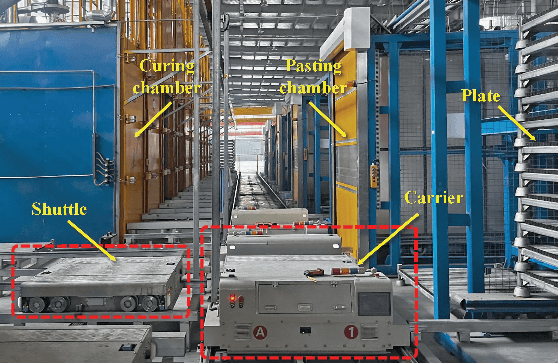
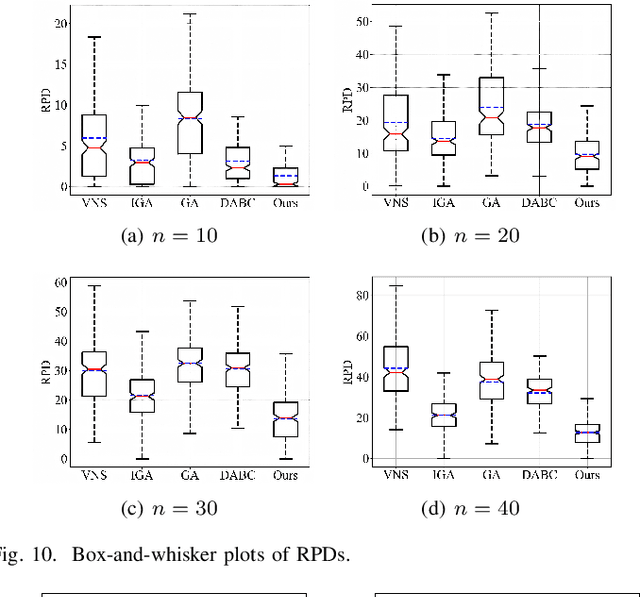
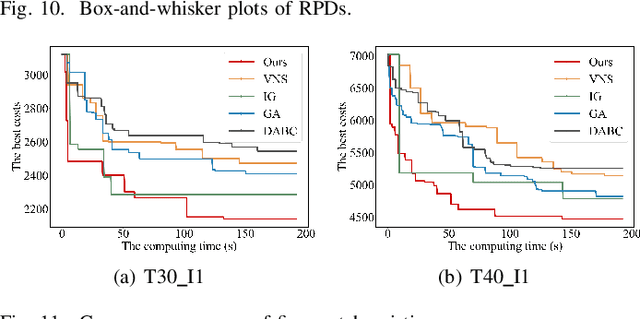
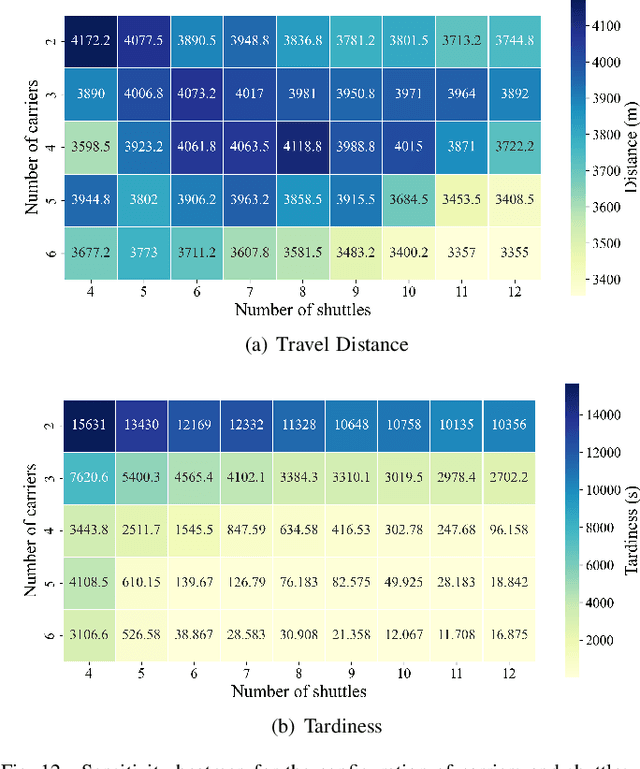
Abstract:The increasing demand for automation and flexibility drives the widespread adoption of heterogeneous automated guided vehicles (AGVs). This work intends to investigate a new scheduling problem in a material transportation system consisting of attachable heterogeneous AGVs, namely carriers and shuttles. They can flexibly attach to and detach from each other to cooperatively execute complex transportation tasks. While such collaboration enhances operational efficiency, the attachment-induced synchronization and interdependence render the scheduling coupled and susceptible to deadlock. To tackle this challenge, Petri nets are introduced to model AGV schedules, well describing the concurrent and sequential task execution and carrier-shuttle synchronization. Based on Petri net theory, a firing-driven decoding method is proposed, along with deadlock detection and prevention strategies to ensure deadlock-free schedules. Furthermore, a Petri net-based metaheuristic is developed in an adaptive large neighborhood search framework and incorporates an effective acceleration method to enhance computational efficiency. Finally, numerical experiments using real-world industrial data validate the effectiveness of the proposed algorithm against the scheduling policy applied in engineering practice, an exact solver, and four state-of-the-art metaheuristics. A sensitivity analysis is also conducted to provide managerial insights.
Adaptive Federated LoRA in Heterogeneous Wireless Networks with Independent Sampling
May 29, 2025Abstract:Federated LoRA has emerged as a promising technique for efficiently fine-tuning large language models (LLMs) on distributed devices by reducing the number of trainable parameters. However, existing approaches often inadequately overlook the theoretical and practical implications of system and data heterogeneity, thereby failing to optimize the overall training efficiency, particularly in terms of wall-clock time. In this paper, we propose an adaptive federated LoRA strategy with independent client sampling to minimize the convergence wall-clock time of federated fine-tuning under both computation and communication heterogeneity. We first derive a new convergence bound for federated LoRA with arbitrary and independent client sampling, notably without requiring the stringent bounded gradient assumption. Then, we introduce an adaptive bandwidth allocation scheme that accounts for heterogeneous client resources and system bandwidth constraints. Based on the derived theory, we formulate and solve a non-convex optimization problem to jointly determine the LoRA sketching ratios and sampling probabilities, aiming to minimize wall-clock convergence time. An efficient and low-complexity algorithm is developed to approximate the solution. Finally, extensive experiments demonstrate that our approach significantly reduces wall-clock training time compared to state-of-the-art methods across various models and datasets.
Linear Simple Cycle Reservoirs at the edge of stability perform Fourier decomposition of the input driving signals
Nov 30, 2024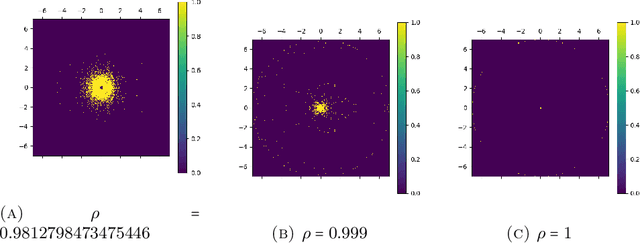
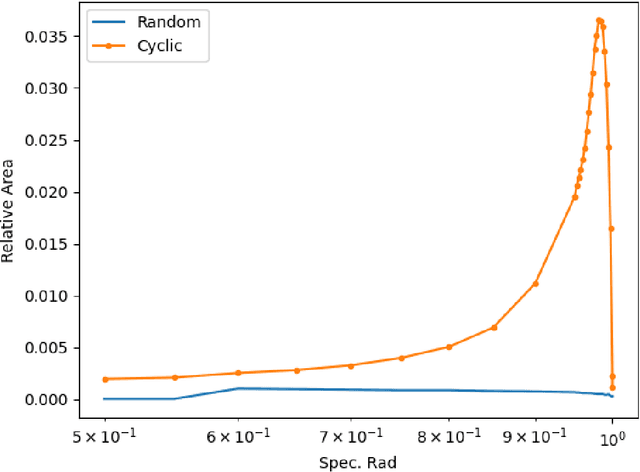
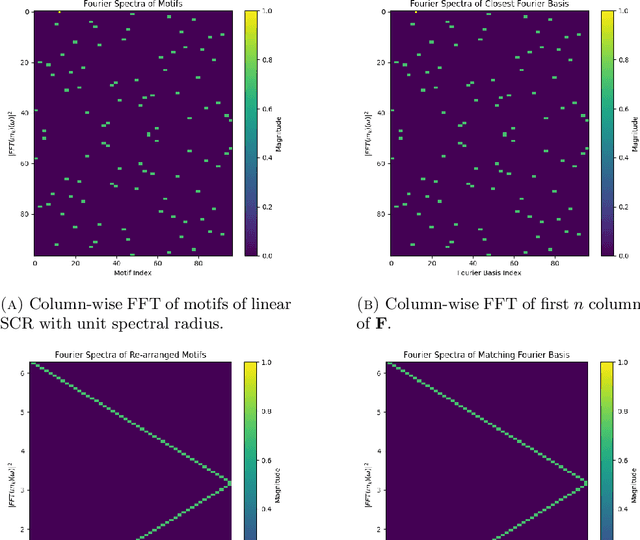
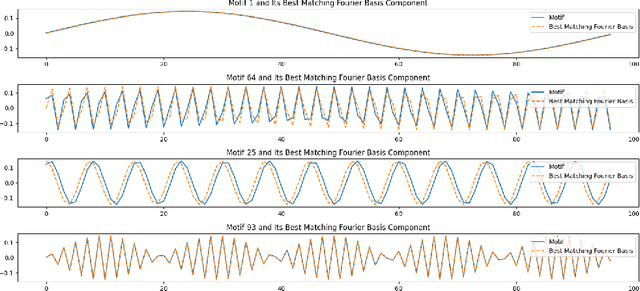
Abstract:This paper explores the representational structure of linear Simple Cycle Reservoirs (SCR) operating at the edge of stability. We view SCR as providing in their state space feature representations of the input-driving time series. By endowing the state space with the canonical dot-product, we ``reverse engineer" the corresponding kernel (inner product) operating in the original time series space. The action of this time-series kernel is fully characterized by the eigenspace of the corresponding metric tensor. We demonstrate that when linear SCRs are constructed at the edge of stability, the eigenvectors of the time-series kernel align with the Fourier basis. This theoretical insight is supported by numerical experiments.
SELU: Self-Learning Embodied MLLMs in Unknown Environments
Oct 04, 2024



Abstract:Recently, multimodal large language models (MLLMs) have demonstrated strong visual understanding and decision-making capabilities, enabling the exploration of autonomously improving MLLMs in unknown environments. However, external feedback like human or environmental feedback is not always available. To address this challenge, existing methods primarily focus on enhancing the decision-making capabilities of MLLMs through voting and scoring mechanisms, while little effort has been paid to improving the environmental comprehension of MLLMs in unknown environments. To fully unleash the self-learning potential of MLLMs, we propose a novel actor-critic self-learning paradigm, dubbed SELU, inspired by the actor-critic paradigm in reinforcement learning. The critic employs self-asking and hindsight relabeling to extract knowledge from interaction trajectories collected by the actor, thereby augmenting its environmental comprehension. Simultaneously, the actor is improved by the self-feedback provided by the critic, enhancing its decision-making. We evaluate our method in the AI2-THOR and VirtualHome environments, and SELU achieves critic improvements of approximately 28% and 30%, and actor improvements of about 20% and 24% via self-learning.
Universality of Real Minimal Complexity Reservoir
Aug 15, 2024


Abstract:Reservoir Computing (RC) models, a subclass of recurrent neural networks, are distinguished by their fixed, non-trainable input layer and dynamically coupled reservoir, with only the static readout layer being trained. This design circumvents the issues associated with backpropagating error signals through time, thereby enhancing both stability and training efficiency. RC models have been successfully applied across a broad range of application domains. Crucially, they have been demonstrated to be universal approximators of time-invariant dynamic filters with fading memory, under various settings of approximation norms and input driving sources. Simple Cycle Reservoirs (SCR) represent a specialized class of RC models with a highly constrained reservoir architecture, characterized by uniform ring connectivity and binary input-to-reservoir weights with an aperiodic sign pattern. For linear reservoirs, given the reservoir size, the reservoir construction has only one degree of freedom -- the reservoir cycle weight. Such architectures are particularly amenable to hardware implementations without significant performance degradation in many practical tasks. In this study we endow these observations with solid theoretical foundations by proving that SCRs operating in real domain are universal approximators of time-invariant dynamic filters with fading memory. Our results supplement recent research showing that SCRs in the complex domain can approximate, to arbitrary precision, any unrestricted linear reservoir with a non-linear readout. We furthermore introduce a novel method to drastically reduce the number of SCR units, making such highly constrained architectures natural candidates for low-complexity hardware implementations. Our findings are supported by empirical studies on real-world time series datasets.
Egocentric Vision Language Planning
Aug 11, 2024Abstract:We explore leveraging large multi-modal models (LMMs) and text2image models to build a more general embodied agent. LMMs excel in planning long-horizon tasks over symbolic abstractions but struggle with grounding in the physical world, often failing to accurately identify object positions in images. A bridge is needed to connect LMMs to the physical world. The paper proposes a novel approach, egocentric vision language planning (EgoPlan), to handle long-horizon tasks from an egocentric perspective in varying household scenarios. This model leverages a diffusion model to simulate the fundamental dynamics between states and actions, integrating techniques like style transfer and optical flow to enhance generalization across different environmental dynamics. The LMM serves as a planner, breaking down instructions into sub-goals and selecting actions based on their alignment with these sub-goals, thus enabling more generalized and effective decision-making. Experiments show that EgoPlan improves long-horizon task success rates from the egocentric view compared to baselines across household scenarios.
TransFeat-TPP: An Interpretable Deep Covariate Temporal Point Processes
Jul 23, 2024Abstract:The classical temporal point process (TPP) constructs an intensity function by taking the occurrence times into account. Nevertheless, occurrence time may not be the only relevant factor, other contextual data, termed covariates, may also impact the event evolution. Incorporating such covariates into the model is beneficial, while distinguishing their relevance to the event dynamics is of great practical significance. In this work, we propose a Transformer-based covariate temporal point process (TransFeat-TPP) model to improve the interpretability of deep covariate-TPPs while maintaining powerful expressiveness. TransFeat-TPP can effectively model complex relationships between events and covariates, and provide enhanced interpretability by discerning the importance of various covariates. Experimental results on synthetic and real datasets demonstrate improved prediction accuracy and consistently interpretable feature importance when compared to existing deep covariate-TPPs.
FedEx: Expediting Federated Learning over Heterogeneous Mobile Devices by Overlapping and Participant Selection
Jul 02, 2024Abstract:Training latency is critical for the success of numerous intrigued applications ignited by federated learning (FL) over heterogeneous mobile devices. By revolutionarily overlapping local gradient transmission with continuous local computing, FL can remarkably reduce its training latency over homogeneous clients, yet encounter severe model staleness, model drifts, memory cost and straggler issues in heterogeneous environments. To unleash the full potential of overlapping, we propose, FedEx, a novel \underline{fed}erated learning approach to \underline{ex}pedite FL training over mobile devices under data, computing and wireless heterogeneity. FedEx redefines the overlapping procedure with staleness ceilings to constrain memory consumption and make overlapping compatible with participation selection (PS) designs. Then, FedEx characterizes the PS utility function by considering the latency reduced by overlapping, and provides a holistic PS solution to address the straggler issue. FedEx also introduces a simple but effective metric to trigger overlapping, in order to avoid model drifts. Experimental results show that compared with its peer designs, FedEx demonstrates substantial reductions in FL training latency over heterogeneous mobile devices with limited memory cost.
 Add to Chrome
Add to Chrome Add to Firefox
Add to Firefox Add to Edge
Add to Edge